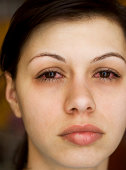You may have heard a lot about probiotics recently, but what exactly are they? Probiotics are live organisms, specifically beneficial bacteria, that live in your intestines and help process indigestible fibers and keep bowel function regular. They produce a number of vitamins, including B6, B12, and K2, and aid in the absorption of minerals such as iron, calcium, and magnesium.
Probiotics are found in yogurt, kefir, milk, and in fermented foods like sour pickles, sauerkraut, kimchee and miso. They can also be taken as over-the-counter supplements.
Although more research is needed, there’s evidence that probiotics may:
.Treat diarrhea, especially after taking certain antibiotics
.Prevent and treat vaginal yeast infections and urinary tract infections
.Treat irritable bowel syndrome
Speed treatment of certain intestinal infections, like Salmonella and E. coli
.Prevent or reduce the severity of colds and flu
.Calm your immune system if you’re prone to allergies or eczema
.Help with anxiety, depression and other mood disorders
So what’s the deal with prebiotics?
Prebiotics are non-digestible carbohydrates that act as food for probiotics. Prebiotics are found in whole grains, bananas, onions, leeks, garlic, honey, asparagus, soybeans and artichokes. When probiotics and prebiotics are combined they form an interdependent, beneficial relationship. One is the live bacteria and the other is the fuel needed to thrive.
Side effects are rare, and most healthy adults can safely add foods, or supplements, that contain prebiotics and probiotics to their diets. If you’re considering taking supplements, check with your doctor to be sure that they’re right for you.
For more health, fitness and lifestyle tips, follow us on Twitter @FHMC_NYC, and like us on Facebook www.facebook.com/FlushingHospital
All content of this newsletter is intended for general information purposes only and is not intended or implied to be a substitute for professional medical advice, diagnosis or treatment. Please consult a medical professional before adopting any of the suggestions on this page. You must never disregard professional medical advice or delay seeking medical treatment based upon any content of this newsletter. PROMPTLY CONSULT YOUR PHYSICIAN OR CALL 911 IF YOU BELIEVE YOU HAVE A MEDICAL EMERGENCY.




 If you have a suspicion that your teen may be using illegal drugs, there are several physical and behavioral patterns you can look for. Some of which include:
If you have a suspicion that your teen may be using illegal drugs, there are several physical and behavioral patterns you can look for. Some of which include:





